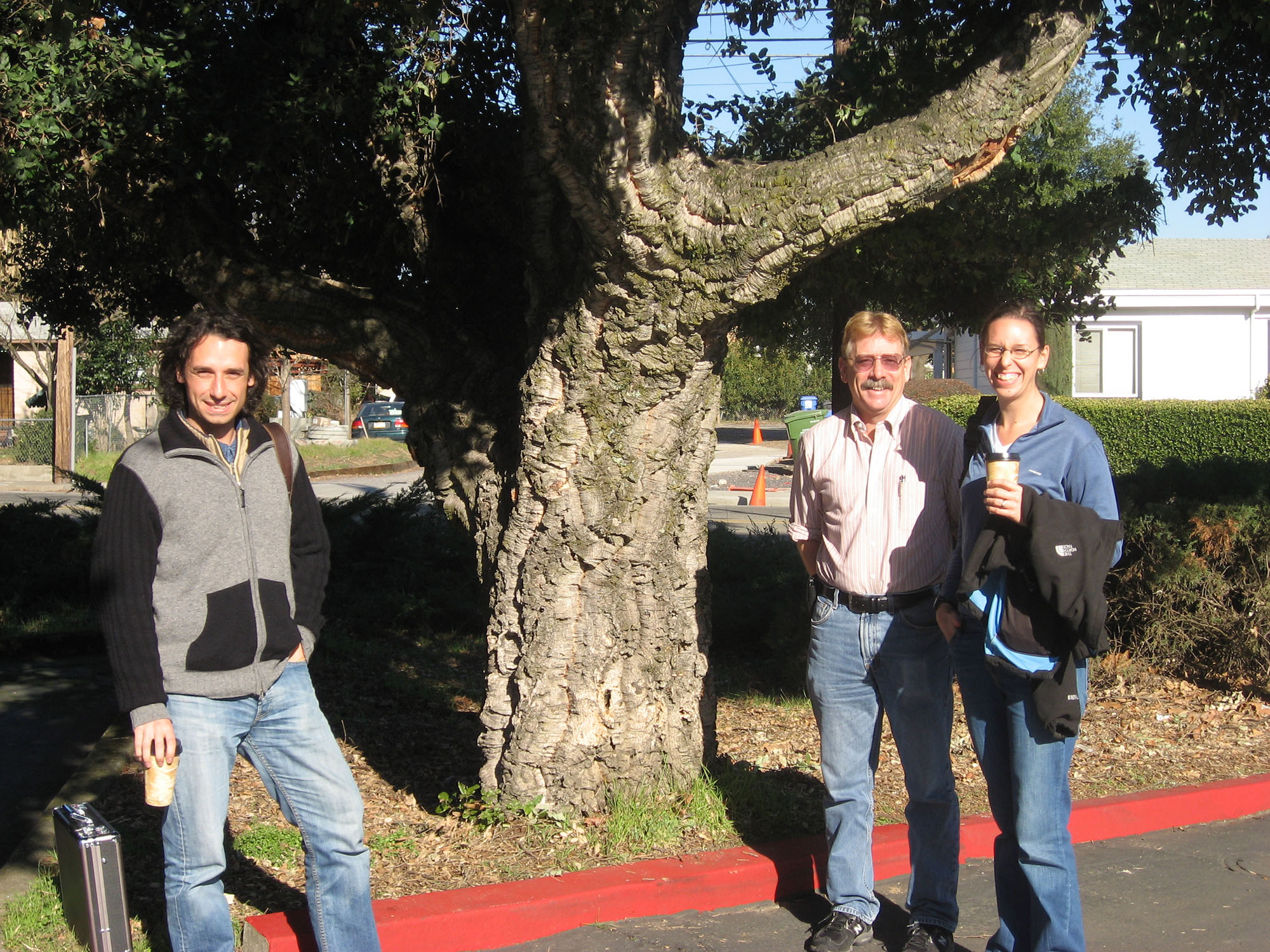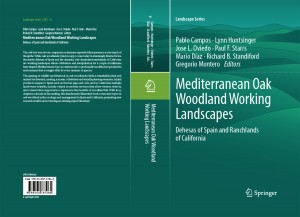Spain and California have Mediterranean oak woodlands, and share some challenges and opportunities in natural resource management. Our current work centers on the ecosystem services managed oak woodlands provide to society. A paper comparing Spain and California is available here: Diversification and Conservation, Spain and California. A complete list of papers and CV are available at the faculty site.
In 2003, INIA [Instituto Nacional de Investigación y Tecnología Agraria y Alimentaria] and the University of California Division of Agriculture and Natural Resources signed an MOU agreeing to foster shared research. We have been very fortunate in having scientists and students from CSIC [Spanish National Research Council] and INIA visit Berkeley. Dr. Jose Oviedo, of CSIC, is a frequent visitor.
We published a book in 2013, comparing the working oak woodlands of Spain and California! Forty four authors, from Spain and California, worked together. Each chapter presents a comparison of as aspect of the woodlands, including ecoystem services, history, remote sensing, acorn production, and livestock husbandry. Available on Amazon and for download on SpringerLink.
Mediterranean Oak Woodland Working Landscapes: Dehesas of Spain and Ranchlands of California, edited by Pablo Campos, Lynn Huntsinger, Jose Oviedo, Paul Starrs, Mario Diaz, Richard Standiford, and Gregorio Montero.
The Table of Contents follows:
Part I. Setting
1. Working Landscapes of the Spanish Dehesa and the California Oak Woodlands: An Introduction.
Lynn Huntsinger, Pablo Campos, Paul F. Starrs, José L. Oviedo, Mario Díaz, Richard B. Standiford and Gregorio Montero
2. History and Recent Trends
Peter S. Alagona, Antonio Linares, Pablo Campos and Lynn Huntsinger
Part II. Vegetation
3. Climatic Influence on Oak Landscape Distributions
Sonia Roig, Rand R. Evett, Guillermo Gea-Izquierdo, Isabel Cañellas and Otilio Sánchez-Palomares
4. Soil and Water Dynamics
Susanne Schnabel, Randy A. Dahlgren and Gerardo Moreno-Marcos
5. Oak Regeneration: Ecological Dynamics and Restoration Techniques
Fernando Pulido, Doug McCreary, Isabel Cañellas, Mitchel McClaran and Tobias Plieninger
6. Overstory–Understory Relationships
Gerardo Moreno, James W. Bartolome, Guillermo Gea-Izquierdo and Isabel Cañellas
7. Acorn Production Patterns
Walter D. Koenig, Mario Díaz, Fernando Pulido, Reyes Alejano, Elena Beamonte and Johannes M. H. Knops
Part III. Management, Uses, and Ecosystem Response
8. Effects of Management on Biological Diversity and Endangered Species
Mario Díaz, William D. Tietje and Reginald H. Barrett
9. Models of Oak Woodland Silvopastoral Management
Richard B. Standiford, Paola Ovando, Pablo Campos and Gregorio Montero
10. Raising Livestock in Oak Woodlands
Juan de Dios Vargas, Lynn Huntsinger and Paul F. Starrs
11. Hunting in Managed Oak Woodlands: Contrasts Among Similarities
Luke T. Macaulay, Paul F. Starrs and Juan Carranza
Part IV. Economics
12. Economics of Ecosystem Services
Alejandro Caparrós, Lynn Huntsinger, José L. Oviedo, Tobias Plieninger and Pablo Campos
13. The Private Economy of Dehesas and Ranches: Case Studies
José L. Oviedo, Paola Ovando, Larry Forero, Lynn Huntsinger, Alejandro Álvarez, Bruno Mesa and Pablo Campos
Part V. Landscape
14. Recent Oak Woodland Dynamics: A Comparative Ecological Study at the Landscape Scale
Ramón Elena-Rosselló, Maggi Kelly, Sergio González-Avila, Alexandra Martín, David Sánchez de Ron, and José M. García del Barrio
Part VI. Conclusions
15. Whither Working Oak Woodlands?
Paul F. Starrs, José L. Oviedo, Pablo Campos, Lynn Huntsinger, Mario Díaz, Richard B. Standiford and Gregorio Montero

